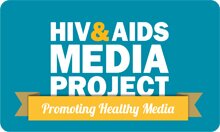Narrative Opportunities and Possibilities
Despite the limitations of space, time and the imagination in many of our media institutions, narrative journalism needs to find a voice, particularly in telling the stories of HIV, if we are to captivate our audiences and engage them on deeper levels and offer them something beyond the transitory and the superficial.
I suspect it is mostly up to ordinary journalists to take the initiative. Time is the enemy of media institutions but an essential component of narrative journalism. If you ask your editor if you can follow a subject over six months you are likely to be asked if you have lost your mind. But it is possible to develop a story over weeks and even months, by only devoting one afternoon a week to it. This is particularly possible with health stories involving either a person's demise or recovery, both of which can be slow. Following people over a long period of time can be very rewarding and informative.

But then comes the telling and that often means that all this time spent observing goes into a 1000-word story or a radio documentary that's over in minutes. There is little tradition of running a series in newspapers, although The Star's series, "A fall of sparrows", (part 1, part 2, part 3), run in October 2003, shows how powerful this can be.
In 1996, Roy Peter Clark from the Poynter Institute in the US, wrote a 30 000-word series called "Three little words". Clark focused on a family struggling with AIDS and broke their experiences down into chapters of 800-1000 words each. These were run every day in the St Petersburg Times for 29 consecutive days. Part of the motivation, says Clark, was to "build readership and get people to return to the habit of reading the paper every day".7
It is unlikely that any local newspaper would run such a long series. But it is possible that longer serialised stories might work with online editions. Journalists could write and develop their stories over a number of days, rather like a web diary or a more conscious form of blogging.
At the very least, we can employ narrative techniques in our run-of-the-mill features and news stories to bring these to life.
In concluding, I would like to return to HIV. Although the epidemic is tearing through our communities, destroying families and the already tattered fabric of many communities, there is no sense of urgency in the South African media. The leadership vacuum in HIV is undermining HIV prevention efforts and jeopardising the 85% of uninfected South Africans. We have a role to play in bringing home to our audiences what is happening in our country. Why aren't we doing it?
References
1. See www.menshealthsa.co.za
2. The Cholera Outbreak: A 2000-2002 case study of the source of the outbreak in the Madlebe Tribal Authority areas, uThungulu Region, KwaZulu-Natal available at: ftp://ftp.hst.org.za/pubs/research/cholera.pdf
3. Unless otherwise identified, all health statistics in this section are taken from South African Health Review 2003 / 4, Health Systems Trust
4. The National Youth Risk Behaviour Survey www.mrc.ac.za/healthpromotion/healthpromotion.htm
5. See Journalism.co.za for HIV/Aids and the power of narrative journalism
6. Harrington, W (1997) Intimate journalism: The art and craft of reporting everyday life. Thousand Oaks: Sage
7. See interview with Peter Clark at: http://www.asne.org/kiosk/editor/december/clark.htm






